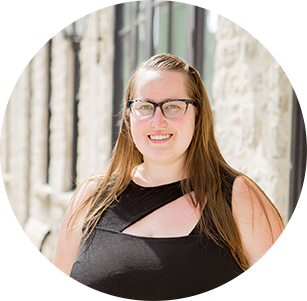You’re the care manager for a busy home care agency with 60 staff under your wing. You need to update care plans for your clients, call families, and find time to send just one email… but the phone won’t stop ringing! Your client’s latest caregiver cannot get into the house with the instructions provided. Another caregiver cannot get the TV remote to work. How many times a day do you answer these types of questions?
Every care manager or owner tackles dozens of the same questions over the phone week after week — and as a caregiver with over 11 years of experience, I’ve definitely asked my fair share.
Want a better way to deal with these non-emergent calls that have your phone ringing nonstop?
I have compiled a list of the eight most common ones with simple solutions for how you can proactively handle them. You will not only save time when your phone rings less, your caregivers will love you for it.
The top 8 calls care managers field each week
1. I can't find the house; I'm going to be late.
Scenario: I can't tell you how many times I’ve gone to visit a new client at an address with missing or hidden house numbers. I’ve even walked up and down the street late at night with a flashlight looking for the right house.
Solution: Provide more than an address. Post a clear photo of the home’s exterior from the street (including one when it is dark outside) to make finding a house much easier. You can also list distinguishing features or other relevant information (where to park, special directions).
2. I can't get into the house!
Scenario: It’s 3 am on the night shift and I’ve received an alert from a Lifeline device at a client’s home across town. There’s a lockbox hanging on the door of the home, but the code on the paperwork does not work and the client is unable to answer. What should have been a quick entry to analyze the situation turns into a half-hour wait for the police to provide access. The client had fallen and was laying on the ground. At the 7 am team debrief and shift change, we learn that the lockbox code had been changed and the paperwork was not current.
Client homes come with a variety of security and entry methods. These include keys hidden in flowerpots or under mats, lockboxes with changing codes, security systems that must be armed/unarmed, certain doors or entrances that should or should not be used, and buzz codes for condo buildings.
Solution: Keep lock and entry instructions current. Store them digitally in a secure and central location where changes can be documented in real-time — and all caregivers can quickly access them.
3. I can’t get the [X] to work (e.g. TV remote, thermostat, etc.).
Scenario: I was providing care to a lovely 86-year-old woman — the highlight of her day was watching Jeopardy and baseball games. She was unable to use the TV and remote herself, so she wanted her TV set for the upcoming game before I left. Unfortunately, I could not work the remote either, and there were no instructions.
Some clients may have older equipment or unfamiliar systems. Knowing how to use them can make a huge difference in a client’s day.
Solution: Provide a video or a photo with written instructions for any unusual or commonly used items like TV remotes. Post this information in one place for caregivers to access.
4. I cannot find my client at her retirement/skilled nursing home.
Scenario: Spending time trying to simply find a new client who lives in a shared residence is a very common issue for staff from an outside agency. Often time is wasted finding a staff member of the residence to assist you in locating their room, and then locating the client if they are not in their room
Other common issues including knowing dining times (and where they sit) bath schedules (certain days only) and how to handle lifts & transfers (capacity, equipment, processes). Even placing hearing aids on the nursing cart instead of leaving them in the room—you’re expected to know their procedures.
Solution: Make a concerted effort to collect retirement home procedures, room numbers, and schedules during the intake process. Keep this key information, including client photographs, in a secure, easy-to-access place for all caregivers. A time saver for everyone and a happy client who gets to spend more time with their caregiver.
5. It’s my first visit with this client. Are there any tips to make sure it goes well?
Scenario: That first visit can be stressful for both the client and the caregiver. Each client has different schedules, interests, and ways they like things to be done. I can’t tell you how many times clients have complained to me about needing to explain their preferences to each new caregiver. This is particularly difficult for non-verbal clients or those with high needs where a lot of instruction is required.
Solution: Share daily routines, tasks, notes, and tips for each client. Be sure to include primary family contacts in collecting this information as they often know those small but important details. Your clients won’t have to repeat their care routines multiple times, particularly when you need to send new staff.
6. How can I get a message to family members?
Scenario: A client asks their caregiver to send a message to a family member who lives far away. The caregiver calls the office/admin to tell them the message, and the manager calls the family to pass it along. This process is time-consuming and inefficient for everyone.
Solution: Use a centralized place for families and caregivers to share messages and information that allows for manager/admin oversight. No more relying on “middlemen” (office/admin) to relay basic messages or leave notes in the home binder - which doesn’t work for family members living out of the area.
7. How do I use or change [X]? (e.g. colostomy bag/catheter/lift or other special equipment)
Scenario: Last-minute call-ins happen, and in this case, I received one for a client I had not previously seen. The client was paraplegic and required the use of a Hoyer lift and catheter change & care. Unfortunately, I had not been trained to use this lift equipment yet.
Solution: Provide video instruction in a centralized, easily accessible place. Staff can then learn on the go and ensure they are providing safe and quality care at all times.
8. My client is not home – what do I do now?
Scenario: Arriving at the client’s home and finding they are gone happens more often than we would like. Family might have taken them out, an appointment may have run long, or there could have been an emergency hospital visit. The care manager may not have received a message or they have not had time to relay this to the caregiver.
Solution: Give families a way to update the client's schedule regarding activities, appointments, and whereabouts. Alternatively, family members can send a quick chat message letting the office/admin staff know if they are taking the client out or running late. This single point of communication keeps everyone in the loop and makes important information accessible.
Simple steps to stop the phone from ringing
Even if you just scanned over these examples, you likely noticed that there was a theme to the solution for stopping these phone calls. To stop, or certainly reduce, these and many other non-emergent calls starts with taking three simple steps.
1. Document – taking a little time to document key information to address the question before it becomes a phone call (include photos and video where applicable). Include caregivers in this step by having them share examples and tips they know other caregivers would appreciate. This takes the burden off the office staff to collect and document what caregivers may already know.
2. Post – all instructions and tips in a central and secure place online so that are easily accessible to caregivers, family members, and office staff.
3. Share – let everyone know that they can first check this online source before making a call and that they will be notified when important information is added or changed.
This proactive approach to communicating answers to the most common questions might take a little effort upfront, but I promise it will save at least 2-3 hours of office staff time every week, leading to better care for your clients.
If this all sounds great, but you need a central place to host this information, it is time to check out SparxConnect. A secure engagement and collaboration platform, SparxConnect makes it easy for care teams to work together behind the scenes, include families in the ongoing care of their loved ones, and deliver recognition and support to the caregivers in the field. It is 100% cloud-based, HIPAA compliant, and purpose-built to support a busy home care office.
“Having a central spot where everyone can go and view an update in real-time has not only reduced the calls we receive, it frees up the care managers to work on other priorities. ”
- Kim E., Care Manager at Right at Home Northwest Houston
About the author: Rachel Kuschmierz
 As a Customer Success Manager for SparxConnect, Rachel brings 11 years of caregiving to the forefront of all conversations she has with our customers. She loves working alongside organizations to help them achieve their goals and support their caregivers in providing exceptional care experiences for everyone involved.
As a Customer Success Manager for SparxConnect, Rachel brings 11 years of caregiving to the forefront of all conversations she has with our customers. She loves working alongside organizations to help them achieve their goals and support their caregivers in providing exceptional care experiences for everyone involved.

